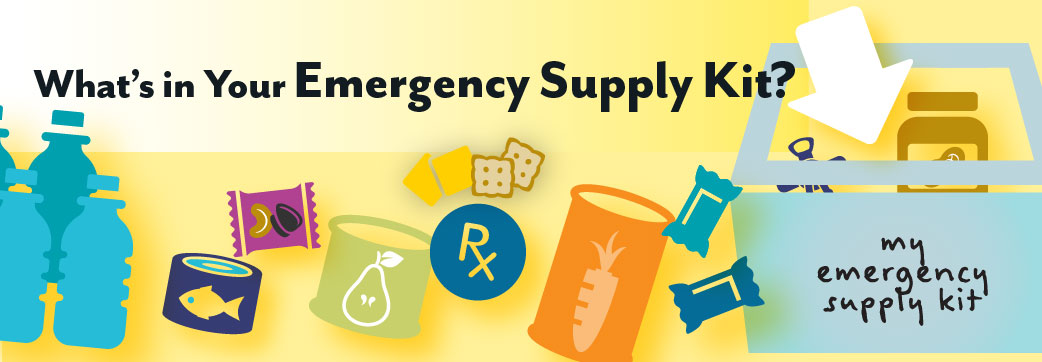
Healthy Emergency Food
To help Florida’s families and communities stay healthy and safe during emergencies, Healthiest Weight Florida has partnered with the Division of Emergency Preparedness and Community Support and Florida Division of Emergency Management, to provide you with ideas for stocking healthier foods in your emergency supply kit.
The first thing any family or business should do prior to an emergency situation is Make a Plan.
Once your plan is in place, you can improve the nutritional quality of the foods you pack by following these simple steps.
Make a list of healthy food items that can be stored without refrigeration and that require no electricity to prepare.
Consider these healthy snack options for your list:
- Oranges—the thick skin keeps the fruit fresh longer than others.
- Nuts—can keep you fuller longer.
- Oatmeal—can be made by boiling water on a gas stove.
- Beans—can add a healthy change from other room temperature foods.
- Dried fruit—high energy snacks that sweetly satisfy.
- Granola—a great source of whole grains and filling for many hours.
- Canned tuna—a healthy option for most people during a disaster. Eat up to 6 ounces of albacore tuna per week or up to 12 ounces of canned light tuna per week according to the U.S Food and Drug Administration.
- Crackers and peanut butter— a small amount can provide protein and good fat and help avoid overindulgence of sweets.
- Stove-top popcorn— a fun food to cook when kids need a distraction and a healthy snack to eat.
- Sports drinks – look for lower sugar content.
- Canned juices – look for 100% fruit juice.
During an emergency:
- Eat your fresh food first: breads, fruits or vegetables, and food from the refrigerator while it’s still cold.
- Next, eat your frozen food.
- Finally, eat your emergency food and any canned foods you have stored.
Additional tips for prepping your pantry and planning an emergency menu:
- Understand safe temperature zones of perishable food. When the power goes out, keep the refrigerator and freezer doors closed as much as possible. The refrigerator, if unopened, will keep food cold for about four hours. A full freezer will maintain its temperature for approximately 48 hours (24 hours if it’s half full) if the door remains closed.
- Remember to include the special foods that infants/children and your pets will need as well.
- Condiments - particularly those that are vinegar-based - such as ketchup, mustard, soy sauce and BBQ sauce have long shelf lives.
- Store boxes of powdered milk or shelf-stable cartons for cereal or deserts.
- Dried fruits, nuts and spices added to other foods can boost flavor.
- Don't forget a manual can opener!
Remember to keep your emergency supply food separate from your regular food and check expiration dates often to restock as needed.





